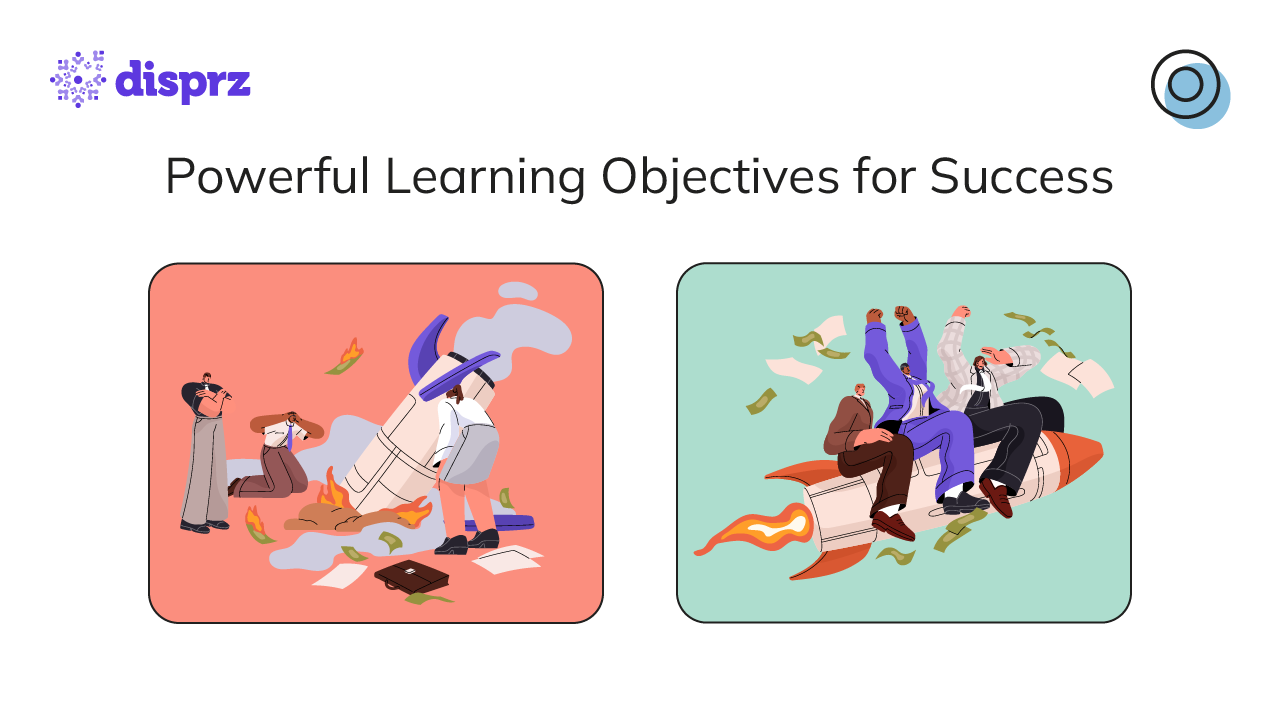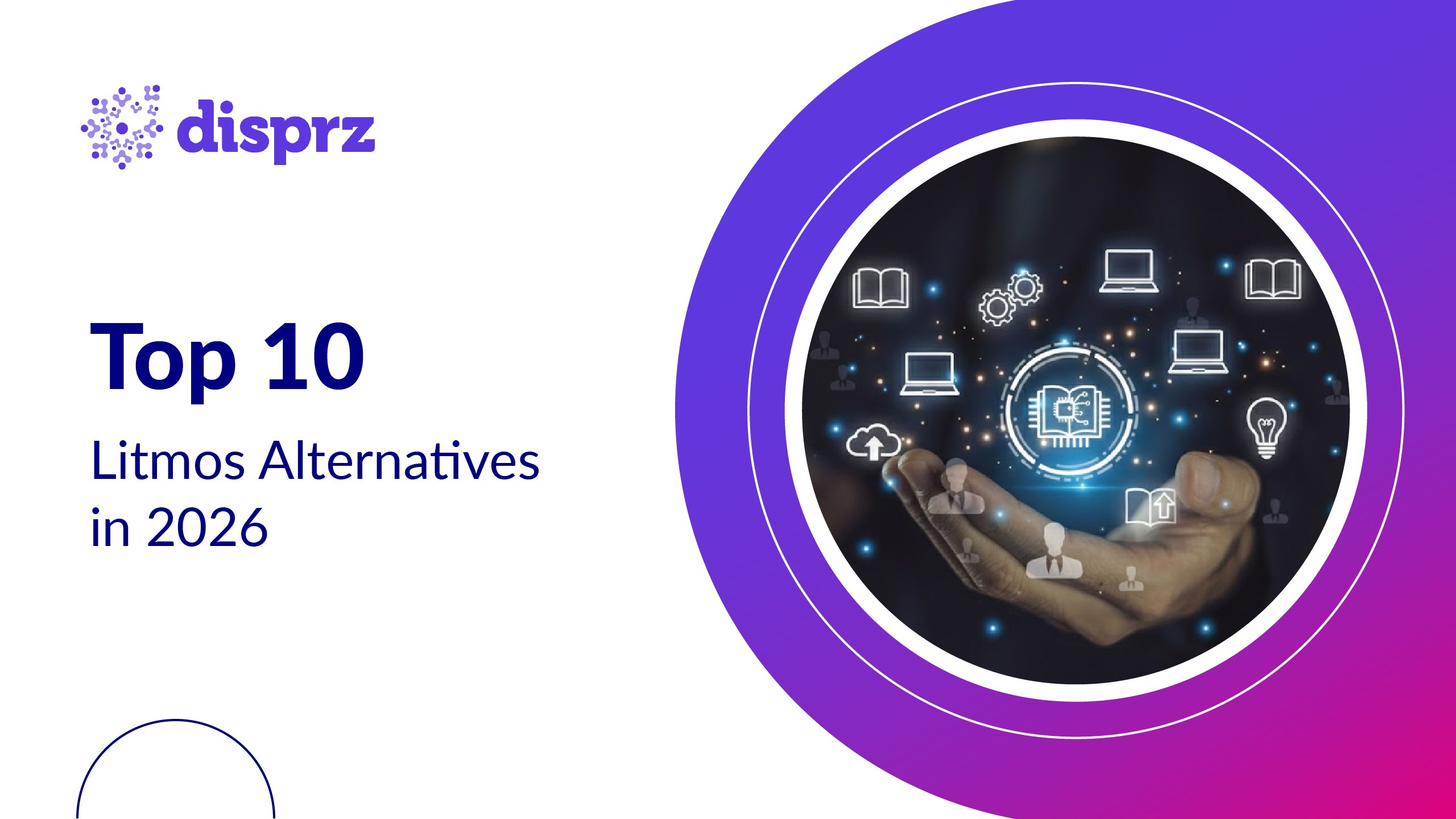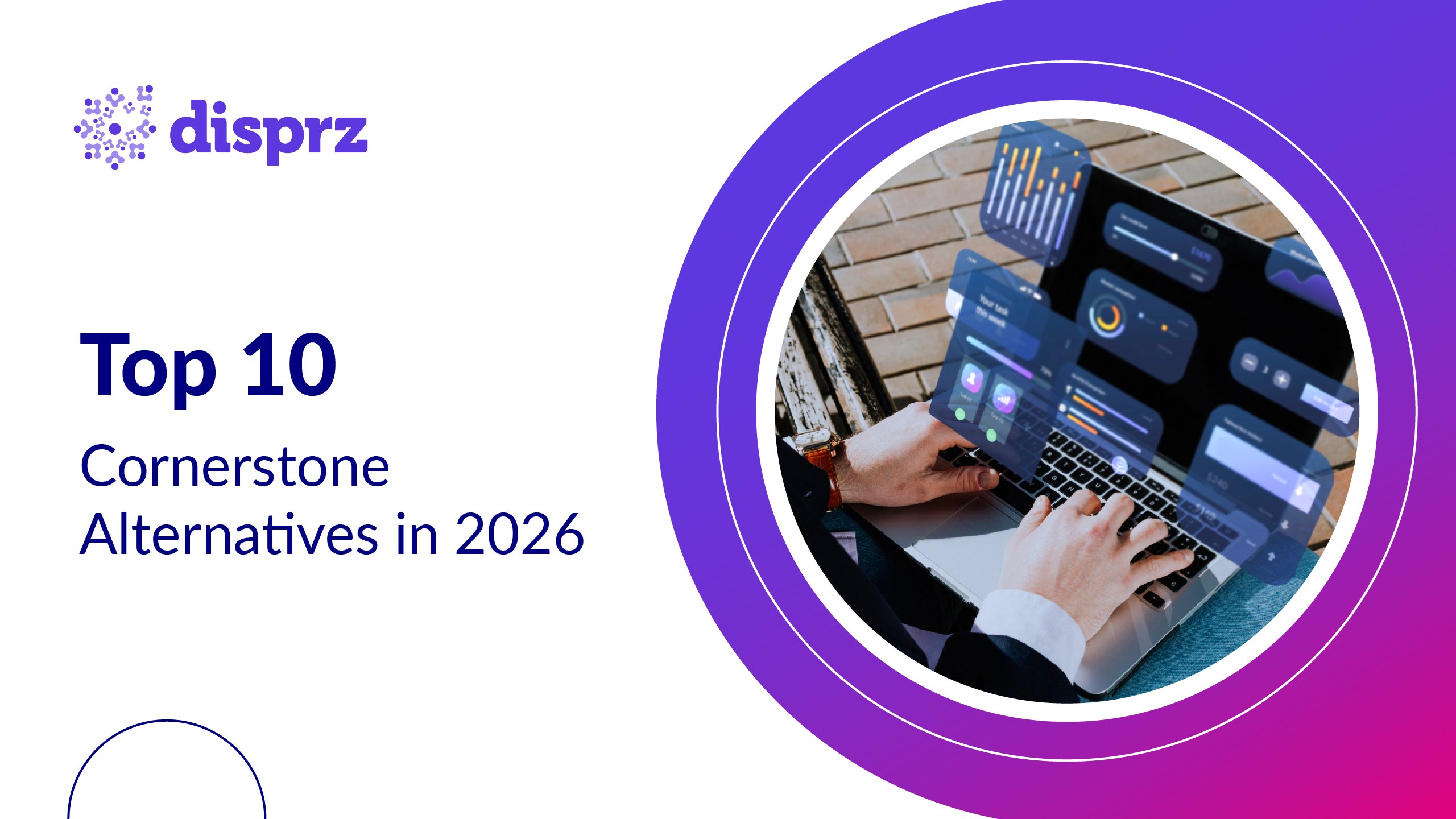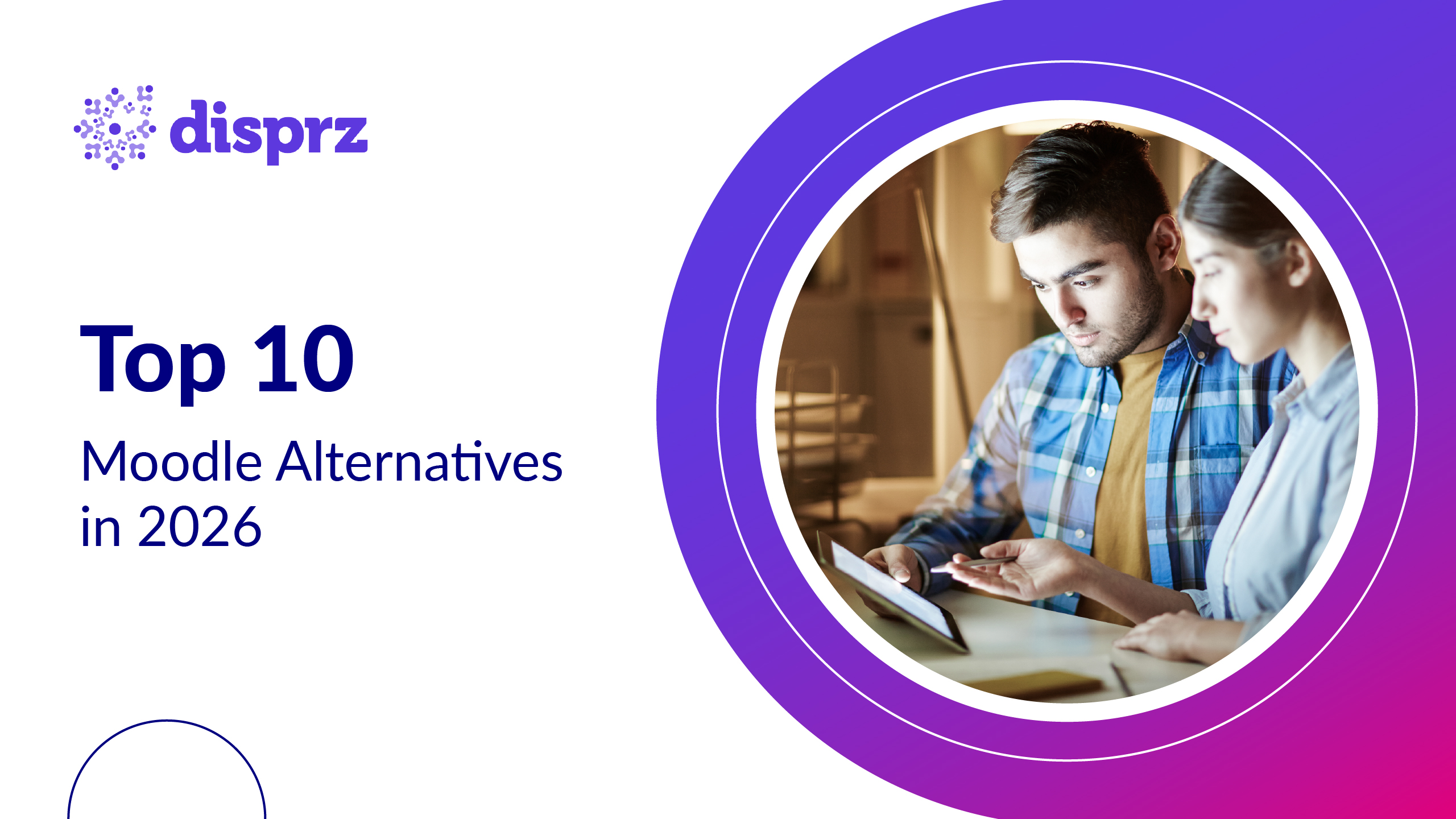For your employees to truly excel, setting clear learning objectives is paramount. This applies not just to work objectives but also to their training. Instead of simply assigning a training module, take the time to envision how you want your team to interact with the material and what you hope they'll gain from it. Establish specific, achievable targets for their participation, performance, and outcomes.
But why are learning objectives important? According to Wiley's 2023 Closing the Skills Gap report, 68% of C-suite executives admit their organizations have a skills gap, up from 60% in 2021. Therefore, learning objectives play a pivotal role in bridging skill gaps.
When employees are provided with well-defined goals and feel backed in achieving them, the results are profound: heightened engagement, reduced turnover, and a more self-assured, successful team.
What are Learning Objectives?
Learning objectives are clear, concise statements that define what employees should know or be able to do after completing a training program. These objectives provide direction for instructional design and help measure the effectiveness of training initiatives. They should align with organizational goals and employee development needs to ensure that learning translates into actionable skills and contributes to overall business success.
Well-crafted objectives of employee training follow the SMART criteria (Specific, Measurable, Achievable, Relevant, and Time-bound) to enhance clarity and effectiveness. Additionally, Bloom’s Taxonomy is often used to classify learning objectives based on cognitive complexity, from basic knowledge recall to higher-order thinking skills such as evaluation and creation.
Organizations that adopt competency-based learning frameworks integrate these principles to ensure training programs drive real-world proficiency. Furthermore, aligning learning objectives with performance goals enables organizations to develop a workforce that is adaptable, skilled, and prepared for future challenges. By setting clear learning objectives, organizations can create targeted, impactful training experiences that strengthen teams, boost engagement, and drive long-term business growth.
Learning Outcomes vs Objectives: What’s the Difference and Why It Matters
In the world of L&D, the terms learning objectives and learning outcomes are often used interchangeably; but they are not the same. Understanding the subtle but important difference between the two is crucial when designing training programs that are aligned with business goals and employee development.
Let’s break it down. A learning objective defines what a learner should know or be able to do by the end of a training session. It focuses on the intent behind the instruction. For example, a learning objective might be: “By the end of this module, employees will be able to explain the five principles of agile project management.
A learning outcome, on the other hand, is a measurable result that indicates what the learner has actually achieved after completing the training. Using the same example, a learning outcome might be: “80% of employees correctly applied the five agile principles in a simulated project scenario.
This distinction is not just academic; it has real implications for how organizations measure training success. When comparing learning objectives vs learning outcomes, think of objectives as your roadmap and outcomes as the destination. Objectives set the direction; outcomes validate if you’ve arrived.
In the context of performance-based learning, failing to differentiate between the two can lead to missed opportunities. A course may check all the boxes in terms of covering topics (objectives), but if the learner cannot demonstrate mastery (outcome), the business value remains unclear.
Why does this matter?
Because in today’s skills-based economy, organizations need to ensure that learning translates into action. When setting training goals, leaders should align both the learning objective vs outcome to key performance indicators (KPIs). This helps track not only participation but also proficiency and behavioral change.
Using tools such as a Learning Management System (LMS) or a Learning Experience Platform (LXP), you can clearly define both objectives and expected outcomes, and track them through skill assessments, feedback loops, and real-time analytics. This data-driven approach enables HR and L&D teams to continuously improve training strategies and ensure alignment with workforce and business goals.
By understanding the nuance between learning objectives vs learning outcomes, organizations can design more impactful programs; ones that not only educate, but also empower teams to perform better, faster, and with greater confidence.
The Purpose of Learning Objectives in Employee Training
The primary purpose of employee training objectives is to create structured, goal-oriented learning experiences that enhance workforce capabilities and drive organizational success. Learning objectives serve multiple purposes in corporate training, ensuring employees acquire essential competencies while aligning training initiatives with business outcomes. They provide a foundation for competency-based learning, help standardize skill development across teams, and contribute to workforce agility.
By clearly defining expectations, organizations can ensure that training programs deliver measurable improvements in employee performance and business impact.
1) Providing Direction
Learning objectives set clear expectations, guiding both trainers and learners. They help instructional designers choose appropriate content, activities, and assessment methods using instructional design models such as ADDIE (Analyze, Design, Develop, Implement, Evaluate) and SAM (Successive Approximation Model).
2) Enhancing Engagement and Retention
Employees are more motivated to engage with training when they understand its relevance. By defining objectives that align with professional growth and company goals, learners see value in their training.
3) Measuring Training Effectiveness
Using Kirkpatrick’s Model for Training Evaluation, organizations can assess training impact at four levels: reaction, learning, behavior, and results. Clear learning objectives make it easier to track progress and demonstrate return on investment.
4) Aligning with Business Goals
Well-defined objectives help bridge skill gaps, foster competency-based learning, and drive workforce productivity, ensuring employees contribute effectively to the company’s success.
The Benefits of Well-Defined Learning Objectives
Creating well-defined learning objectives leads to several advantages that benefit both employees and organizations. They provide a structured approach to training, ensuring that learning initiatives are aligned with business objectives. By clearly defining what employees need to achieve, organizations can track progress, optimize resources, and enhance the overall effectiveness of training programs.
Here’s how they contribute to effective training and business growth:
1) Improved Training Outcomes
Learning objectives act as a roadmap, ensuring training content remains focused and relevant. This reduces wasted resources and increases knowledge retention.
2) Higher Employee Performance
Employees gain clear insights into the skills they need to develop, making it easier to apply new knowledge to their roles. Competency-based learning frameworks further refine skills essential for job success.
3) Better Training Customization
Objectives allow organizations to personalize training for different roles and experience levels. Whether onboarding new employees or upskilling senior staff, targeted learning improves engagement and effectiveness.
4) Increased ROI on Training Investments:
Training without clear objectives often leads to unclear results. By setting measurable goals, organizations can track employee progress and optimize learning programs based on performance data.
5) Easier Compliance and Certification Tracking
Many industries require employees to meet specific standards. Learning objectives ensure training aligns with regulatory requirements, making it easier to track compliance.
6) Seamless Evaluation and Continuous Improvement
Using instructional design models and Kirkpatrick’s evaluation framework, organizations can refine their training approach for continuous improvement, ensuring employees remain agile and future-ready.
Real-World Examples of Effective Learning Objectives
Organizations across industries have leveraged well-crafted training objectives to drive employee performance and business growth.
Here are a few practical training objective examples:
1) Customer Service Training
A retail company sets the objective:
"By the end of this training, employees will demonstrate the ability to handle customer complaints using a five-step resolution process with 90% accuracy." This ensures employees develop problem-solving skills that enhance customer satisfaction.
2) Sales Training for SaaS Companies
A software firm implements the objectives:
"Sales representatives will be able to articulate product value propositions tailored to client pain points and close deals 15% faster within three months." This drives higher conversion rates and sales efficiency.
3) Leadership Development Program
A multinational corporation designs a leadership course with the objective:
"Participants will apply the GROW coaching model to mentor team members effectively and improve team performance metrics by 20% within six months." This enhances leadership skills and team productivity.
4) Compliance and Safety Training in Manufacturing
A manufacturing company establishes an objective:
"By the end of this course, employees will correctly follow five key safety protocols, reducing workplace accidents by 25% over the next year." This ensures compliance and workplace safety improvements.
5) Technical Upskilling for IT Teams
A tech company develops an advanced cybersecurity training program with the objective:
"Participants will successfully implement three cybersecurity best practices and pass an internal security audit with a score of 90% or higher." This strengthens the organization’s security posture.
By leveraging SMART criteria for learning objectives, organizations can enhance workforce skills, improve business outcomes, and build resilient, future-ready teams.
Six Ways for Empowering Employees Through Learning Objectives
Here are six ways you can use learning objectives to empower your employees
1) Create Specific, Measurable Learning Objectives
To propel employees toward success, learning objectives must be sharp and actionable. Aim for SMART (Specific, Measurable, Attainable, Relevant, and Time-bound) goals aligned with your company's key performance indicators (KPIs) and business objectives, not just vague aspirations. Define clear benchmarks for success.
Figure 1: SMART Goals
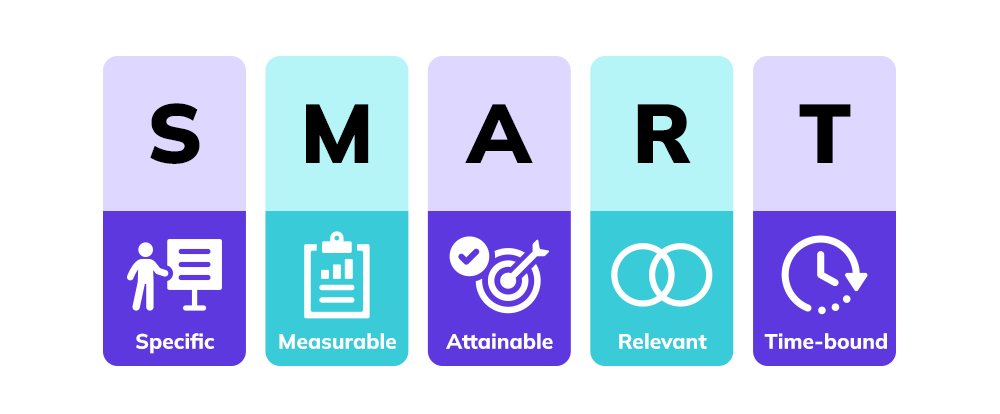
What specific knowledge do employees require to optimize outcomes in time management, customer satisfaction, safety, compliance, and ultimately, sales and revenue? Detail the essentials needed to achieve these critical ends.
2) Sync Training Objectives with Strategic Goals for Maximum Impact
Once your goals are established, craft comprehensive training materials to underpin them. Tailor the training to actively drive the desired outcomes, ensuring it's segmented to highlight various learning domains.
For instance, if employing an advanced training platform, each module should hone in on a distinct, pertinent learning objective. In a retail setting, modules could range from managing challenging customer interactions to mastering upselling techniques and implementing loss prevention strategies. This approach could yield an extensive library of modules, addressing every facet of targeted expertise.
Determine the pivotal concepts essential for each team member and assign specific completion deadlines for each module or learning objective. This structured approach ensures thorough mastery across the board.
3) Embrace the Potential of Open-Ended Goals
Often, we perceive goals as finite, with a start and end date, such as one set on April 1st, to be completed by September 30th. However, not every objective needs to be tethered to a specific task's culmination. Cultivating effective training habits can itself constitute a goal worth pursuing.
Consider this: one of your fundamental aims could revolve around ingraining training into your daily routine, making it as instinctual as clocking in and out. Leveraging technology can bolster these ongoing training endeavors. For example, consider Disprz, an AI-powered, learning and skilling suite designed to deliver brief daily courses, adaptive learning that continually reinforces crucial information, and comprehensive metrics enabling you to gauge each learner's progress over time. With just 3 to 5 dedicated minutes per shift, you can ensure your team consistently retains knowledge and expands their skill set.
Figure 2: Track Learner’s Progress
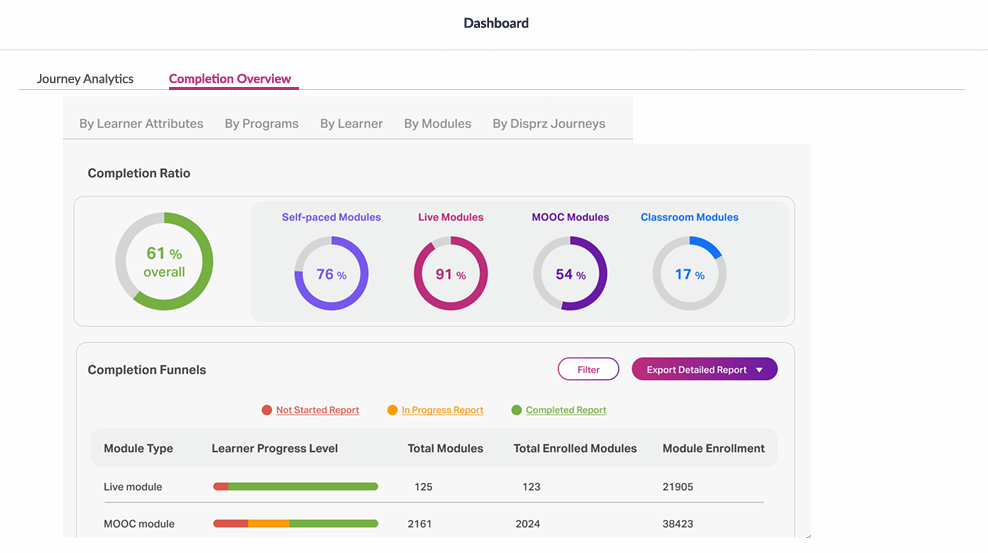
Source: Disprz
4) Stay Connected with Employees to Assess Goal Progress Through Regular Check-Ins
Don't solely rely on training metrics for tracking goal progression, regularly touch base with your employees for a comprehensive understanding. This can seamlessly integrate into the quarterly review process or be woven into routine one-on-one meetings. Engage your employees in a dialogue about their training experiences, probing for insights on what's effective, what's challenging, and what areas still demand attention.
Approach these discussions armed with preliminary insights derived from existing data, offering a snapshot of the employee's current progress towards their goals. Whether they're exceeding expectations, lagging, or grappling with specific concepts, leverage this information to steer the conversation, all while actively seeking the employee's perspective. Remember, adaptability is key, so be prepared to recalibrate goals if necessary to ensure continued alignment with evolving needs and circumstances.
5) Empower Your Employees by Proactively Facilitating Goal Achievement
As you seek out and pinpoint potential avenues for enhancement, it's essential to offer coaching and support tailored to each individual's needs. Leveraging AI-powered learning and skilling platforms such as Disprz provides invaluable insights related to employees’ KPIs. Utilizing this data allows you to identify individuals who may be encountering challenges and pinpoint areas requiring additional attention.
Figure 3: Provide Coaching Through KPI Linked Modules
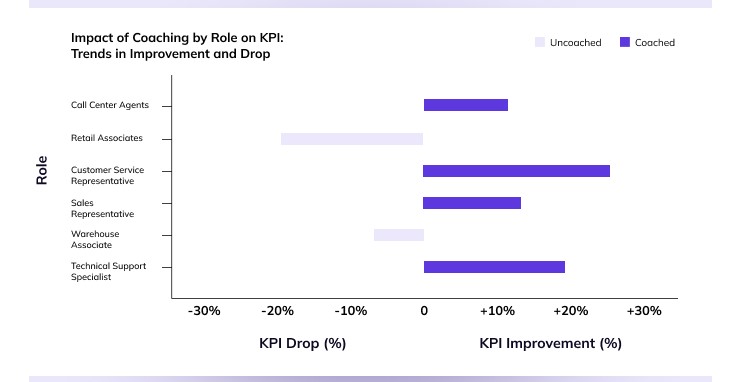
Source: Disprz
While occasional correction and disciplinary measures may be warranted in cases of goal neglect, employing a positive coaching approach can often yield more effective results when employees are grappling with meeting benchmarks or grasping the material. This proactive support fosters a nurturing environment conducive to ongoing growth and development.
6) Harness the Power of Positive Reinforcement Techniques
To maintain employee focus and drive toward their learning objectives, prioritize the implementation of positive reinforcement strategies. This practice stands as a cornerstone within numerous leading organizations for its proven efficacy in fostering employee productivity and motivation.
Take deliberate steps to recognize and appreciate employees for their accomplishments. As you witness individual growth and goal attainment, consider implementing rewards to celebrate these achievements. While some companies opt for formal perks programs to acknowledge specific milestones, the absence of a structured platform shouldn't hinder your ability to recognize and reward progress. Additionally, offering opportunities for career advancement serves as a powerful incentive in itself. Linking ambitious goals to tangible rewards such as salary increases or promotions can be particularly motivating, provided that promises made are consistently upheld.
Prioritize Your Own Personal Growth Journey
In the realm of overseeing training initiatives, it's imperative for managers and L&D professionals to recognize the significance of their own ongoing learning journey. Dedicate time to actively engage with employee feedback, meticulously analyze pertinent metrics and emerging trends, and extract valuable insights from the continuous flow of information. Evaluate the effectiveness of training materials, identifying areas requiring refinement or additional clarification. Pinpoint recurring challenges encountered by employees in their developmental journey.
Embrace a mindset of continuous learning and evolution. By adapting and learning iteratively, you enhance your capacity to address the diverse training needs of your team effectively. This proactive approach fosters an environment conducive to meaningful growth, benefiting both individual employee development and the overarching pursuit of organizational objectives.
Conclusion
Harnessing the power of learning objectives can profoundly elevate team dynamics and performance. By meticulously aligning training objectives with organizational priorities, fostering a culture of continuous learning, and actively engaging with employees to personalize learning experiences, organizations can unlock the full potential of their teams. Through diligent monitoring, adaptability, and a commitment to personal growth, L&D leaders can cultivate an environment where every team member thrives, driving collective success and propelling the organization toward its strategic objectives.
Download our purple paper now to understand the critical role of setting learning objectives for your employees. Learn how effective and clear learning objectives can help organizations like yours improve employee engagement and contribute to overall business growth.



